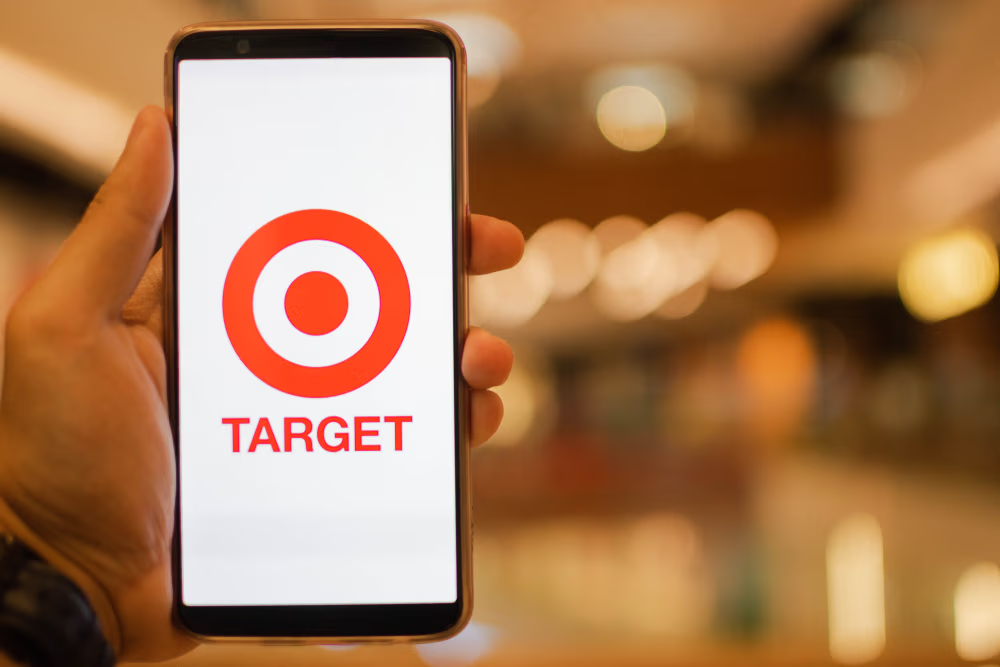If you want to expand your reach and gain credibility as a purveyor of products within your specific niche, selling on Target Plus is a great idea. Read on to learn how to sell on Target Plus and get tips that will help you maximize your sales.
With more than 1,900 stores across all 50 states, Target is one of the nation’s largest big-box chains, known for its popular RedCard program.
The company’s Target Plus platform allows third parties to list their products alongside Target's own inventory, much like Walmart, Amazon, and Shopify’s e-commerce marketplaces. Sellers selected for Target Plus get to tap into Target’s status as a recognized and trusted brand with a loyal consumer base.
How to become a Target vendor
Not just anyone can sell on Target’s e-commerce marketplace. Target Plus has specific requirements, processes, and features that would-be sellers must understand. The retailer is known to enforce strict rules for sourcing, vendor diversity, fulfillment schemes (such as Amazon FBA), accounts payable, and advertisements on its platform.
For instance, sellers must have a physical presence in the U.S. to be accepted on Target Plus. What’s more, Target Plus typically allows only domestic shipping. Similarly, dropshipping is permitted on a selective basis.
Price consistency is another requirement, ensuring competitive and reliable pricing across products. Sellers must also meet product assortment standards set by Target Plus, which makes Target SKUs available to its selected sellers.
Sellers are expected to process orders promptly, ensuring quick shipment and delivery. Exceptional customer service is expected, too, including prompt responses to inquiries, swift resolution of any issues, and compliance with Target’s privacy policies. Adhering to these requirements ensures a high standard of quality and a positive experience for buyers, allowing Target to deliver the reliable shopping experience its customers expect.
6 steps to get started on Target Plus
Follow these steps to begin selling on Target Plus:
- Apply and qualify: Begin by submitting a Target marketplace application. The application will undergo a review to ensure your business meets the requirements.
- Register: Once your application is approved, you’ll need to register as a seller on the Target Plus platform. You must provide the required business information and agree to the terms and conditions.
- Obtain insurance: Target Plus requires sellers to have appropriate liability insurance coverage. Obtain the necessary insurance policy.
- Open a business bank account: You’ll need to open a separate business bank account to manage financial transactions and electronic fund transfers (EFTs) related to Target Plus. This keeps your business finances organized and separate from your personal finances.
- Set up EDI: Electronic data interchange is essential for selling on Target Plus. It enables seamless electronic communication and data exchange with Target's systems. Set up the required EDI processes to ensure efficient order processing and inventory management.
- Fill out the supplier intake form: Complete the supplier intake form provided by Target. This form collects important information about your business, product assortment, inventory management, and other necessary onboarding details.
Target benefits
Why do so many businesses jump through the hoops to become third-party sellers on various online marketplaces? It’s simple. Selling on Target Plus offers significant advantages, including the following:
- Enhanced brand exposure: By selling on Target Plus, you gain access to millions of dedicated Target customers. This enhances your brand visibility and increases awareness among the retailer’s vast, highly engaged audience.
- Credibility and trust: In a similar vein, selling on Target Plus lends credibility to your brand. Being associated with a reputable retailer like Target inspires confidence from potential customers.
- Increased sales potential: Target's enduring reputation as a popular retail destination can drive higher sales for your products.
- Streamlined fulfillment and support: Target Plus provides streamlined fulfillment processes, including access to Target's established supply chain infrastructure and logistics capabilities. This ensures efficient order processing, reliable shipping, and timely delivery. Additionally, Target Plus sellers may receive support from Target's customer service team, reducing the burden of customer inquiries.
- Access to Target's expertise: As a Target Plus seller, you can tap into Target's wealth of retail expertise. You’ll gain valuable insights, industry knowledge, and best practices to refine your selling strategies and optimize your product offerings.
- Multi-channel selling: Selling on Target Plus allows you to diversify your sales channels. Alongside your own website and other marketplaces, Target Plus expands your presence and lets you reach a broader customer base.
- Marketing and promotional opportunities: Target Plus offers various marketing and promotional opportunities, including featured placements, deals, sales, and more. These initiatives boost your brand exposure, sales, and customer engagement.
4 Target Plus tips

Want the inside scoop on how to improve your chances of success on the Target Plus marketplace and differentiate your brand from competitors? The following tips will optimize your Target Plus sales efforts and maximize your profit margins:
Choose your products wisely
Select products that align with Target's customer base and cater to popular trends. What’s on the shelf at Target stores now? Consider Target’s existing product lines, sourcing, and typical purchase orders. Focus on quality, uniqueness, trendiness, and competitive pricing to stand out in the marketplace.
Optimize your merchandising
Craft compelling and informative product descriptions accompanied by high-quality images. Use relevant keywords to enhance visibility in search results. Hone your pitch by highlighting the product features, benefits, and competitive advantages that will appeal to Target Plus shoppers. Research copywriting to compose high-performing descriptions and taglines.
Offer competitive pricing and deals
Price your products competitively to attract customers. Consider offering exclusive discounts, bundle deals, or limited-time promotions to create a sense of urgency.
Provide excellent customer service
Exceptional customer service will help you build trust, encouraging positive reviews and customer loyalty. Seasoned marketers know that organic, word-of-mouth recommendations are the most effective advertising. Likewise, dozens of enthusiastic customer reviews may do more to move products than even high-quality paid campaigns.
Orderful helps you aim for success on Target Plus
To succeed on Target Plus, you need to integrate seamlessly with this online marketplace. Consider partnering with Orderful to optimize your operations and streamline EDI processes.
Our robust, market-tested EDI solutions facilitate smooth data exchange and efficient inventory management, ensuring successful collaboration with Target. Speak to an Orderful expert today to unlock the full potential of selling on Target Plus.
Orderful gives companies a more efficient way to connect, test, and exchange data with their partners through one unified platform. You can explore the full platform to see how it supports modern EDI workflows or check out Web EDI and visit our pricing page to understand how cost effective it is to get started.
Selling on Target FAQs
How do I get my products into Target?
To get your products into Target, you must apply through Target Plus, Target's invite-only online marketplace. If your product assortment meets their standards and current needs, you may be invited to onboard.
What is Target Plus?
Target Plus is Target’s curated third-party marketplace that allows select sellers to list their products on Target.com. It is invite-only and designed to maintain a high-quality customer experience.
How do I sell on Target Plus?
You must apply for an invitation to sell on Target Plus. Once approved, you’ll complete onboarding, set up EDI integration, upload your product catalog, and begin selling on the platform.
How do I become a vendor for Target?
To become a vendor, you need to submit a vendor application through Target Plus. You must be a registered U.S. business, meet Target’s operational and compliance requirements, and provide accurate product data.
What is the Target vendor list?
The Target vendor list is not public. Target works with a select number of sellers who are approved for Target Plus. Approved vendors are curated based on assortment fit, pricing, and operational standards.
How do I submit a Target vendor application?
You can begin the process by applying through Target’s Partner Portal. Be prepared to provide your EIN, business information, product details, and fulfillment capabilities.
What is a Target seller account?
A Target seller account is an approved account within the Target Seller Central platform. Once approved, it allows you to manage listings, process orders, and maintain performance metrics.
What does Target look for in a seller?
Target looks for U.S.-registered businesses that can meet its standards for pricing consistency, product quality, fulfillment speed, and compliance. EDI readiness and liability insurance are also required.

